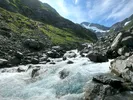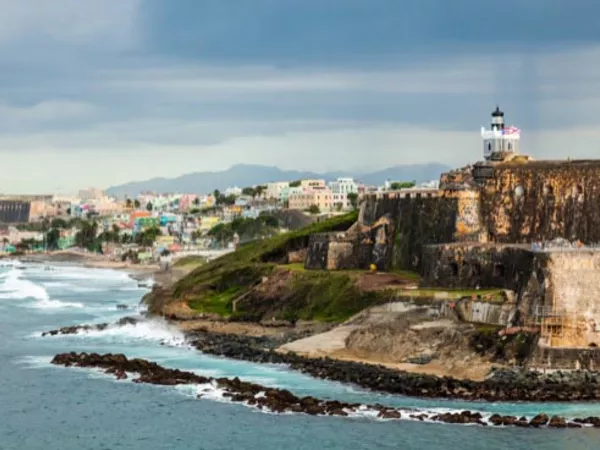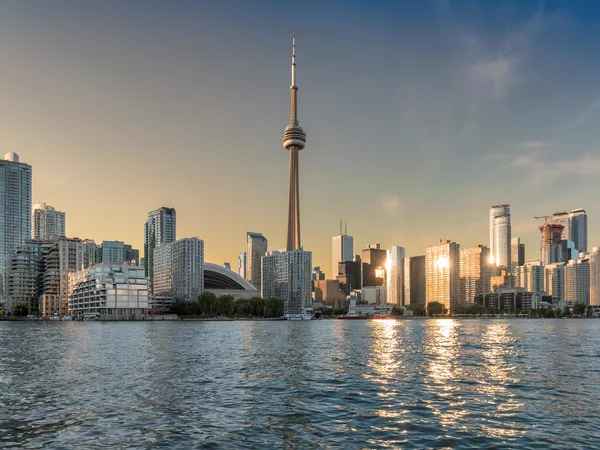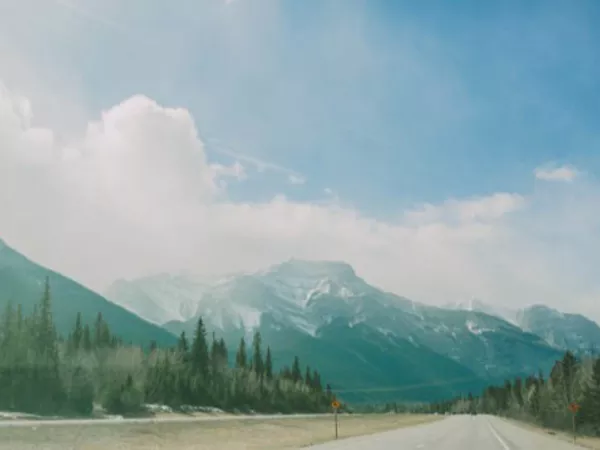Alaska 101: A Complete Guide for Moving
9 things to know before relocating to Alaska
Moving to the Frontier State can be the start of a great adventure. But, since life in Alaska is quite different from what you’ll find in the lower 48 states, it’s best to know what to expect with the moving process and the Alaskan experience. U-Pack® has helped people move to Alaska for 25 years, and we’ve prepared a list of what to know before you go.
Need to PCS to Alaska? U-Pack can help — just consult with your base’s travel office for specific rules and regulations.

1. Alaska is bigger (and smaller) than you think
Despite the fact that Alaska is the largest state in the U.S. (more than twice the size of Texas) it is also the least densely populated state according to the 2020 U.S. Census – partly due to the large number of lakes, rivers and active volcanoes throughout the state. So, if you’re looking for some more personal space, Alaska is a great choice since many locations are small, isolated villages.
Let’s look at some facts:
| Population | 733,391 |
| State size | 633,300 square miles |
| Highest Point: Denali (formerly Mount McKinley) | 20,310 feet above sea level |
| Glacier Coverage | 5% of the state of 29,000 square miles |
| Bodies of water | 3,000+ rivers and over 3 million lakes |
| Shoreline | 33,904 miles |
| Volcanoes | 70+ active |
Data from the Official Alaska State Website and the 2020 United States Census.
2. The capital isn’t the largest city in the state
Looking for big city life in Alaska? You might think the capital, Juneau, is the largest city in the state, but it’s not. Anchorage is actually the most populated place with just over 291,000 people, which is more than 9 times as many residents as the capital! It might be a better option if you prefer living near more amenities. Looking for other potential places to settle down? Here are Alaska’s top 10 largest cities and their populations as reported in the 2020 U.S. Census:
- Anchorage (291,247)
- Fairbanks (32,515)
- Juneau (32,255)
- Knik-Fairview (19,297)
- Badger (19,031)
- College (11,332)
- Meadow Lakes (9,197)
- Wasilla (9,054)
- Tanaina (8,817)
- Kalifornsky (8,487)
Check out some of the best places to live in each region of Alaska
3. Alaskan food and culture are unique to the state
Looking to expand your typical diet? Alaska is a great place to try new things! Don’t be surprised to find large game animals like moose, caribou and elk on the menus. Cold-water seafood like halibut and salmon are also popular since they can be caught locally. King salmon is actually the state fish! Wild berries like lingonberries and salmonberries are common. For a new dessert, consider trying the traditional Alaskan dish akutaq (also known as Eskimo ice cream), which is whipped animal fat with berries and snow.
Alaska has an influential native culture and heritage showcased in festivals and food offerings. Native languages are still spoken in some areas. Because of Alaska’s location close to Russia, you’ll also notice some influence from that culture in the state. With the numerous hiking areas to explore and wildlife to see, people in Alaska generally appreciate the great outdoors. Many people who enjoy hunting and fishing flock to the area to enjoy the wide-open spaces.
4. Be prepared for a different climate in Alaska
With its location near the Arctic Circle, Alaska has different amounts of daylight and darkness compared to the lower 48 states. Living there means having to make adjustments for day and night hours.
Many residents take Vitamin D supplements and use special sun lamps to compensate for the lack of sunlight during the dark winters, which average only 3 - 6 hours of daylight per day. However, during the summer, some places experience more than 20 hours of light a day during the season, and when the sun does set, it still doesn’t get completely dark! To counteract this, residents may use blackout curtains in their bedrooms so they can sleep.
The seasons also look and feel a little different in Alaska. Winter, usually October - March, typically comes with extreme cold toward the interior of the state and slightly warmer temperatures near the ocean. Snowfall is always abundant, and Southeast Alaska receives the most rainfall. In the winter, it’s best to allow extra time to shovel snow and clear off the car. Because of the darkness and cold air, the need for extra light and heat can lead to higher-than-average electric bills.
Alaska generally experiences a melting period in April that leads into a short spring in May. Summer, mostly June - August, has plenty of sunshine and average temperatures in the 60s and 70s. Fall is just a few weeks in September before the snow starts again.
5. There are no income or statewide sales taxes in Alaska
When considering job offers and salaries in Alaska, keep in mind that the state doesn’t have individual income taxes or statewide sales taxes. However, some cities might have local taxes that are usually less than 5%. Property tax rates in the state vary based on area, dwelling type and age of the owner. For more tax information, visit the Alaska State Assessor’s website.
6. The cost of living isn’t the highest in the U.S.
Some people might be concerned about moving to Alaska because of the high cost of living, but it’s actually not the most expensive place to live in the U.S. While Alaska has a higher cost of living than the national average, Hawaii; Washington, D.C.; Massachusetts; California and New York all had higher costs of living for the second quarter of 2022.*
Housing
As of March 2022, the median adjusted rent (including basic utilities) in Alaska was $1,279.** A quarterly survey, conducted with the Alaska Housing Finance Corporation, found the average house in the state sold for $402,976** during the first quarter of the year.
Healthcare
Alaska is the fourth highest state for health insurance premium costs, following West Virginia, Wyoming and Vermont. The average lowest tier monthly premium for a healthy 40-year-old in Alaska was $672.** Dental care is often more expensive in the state as well. For example, the average cost for a basic dental cleaning in the U.S. was $104.87 in the U.S. versus the averages of $150 in Anchorage and $160 in Juneau.**
Groceries
Food costs vary across the state since it’s more expensive to transport goods to remote areas. Prices are typically lower in urban communities (like Fairbanks and Wasilla) and higher in places where food must be flown in (like Bethel and Nome). But the highest prices in Alaska are generally found in the capital city of Juneau. For example, the price for a dozen eggs averaged $2.19 in Juneau and $1.99 in Anchorage and Fairbanks, while the average U.S. price was $1.78.**
Fuel
In early 2022, the average cost for gasoline in Alaska was $5.31 a gallon and heating fuel was $4.83 a gallon.**
Unemployment rate
The Alaska Department of Labor and Workforce Development reported the state’s seasonally adjusted unemployment rate was just 4.5 percent in July 2022, compared to the U.S. rate of 3.5 percent. Job seekers in Alaska can find openings and apply for jobs online on the department’s website.
*Source: Missouri Economic Research and Information Center, Cost of Living Data Series
**Source: Alaska Government Economic Trends Report, July 2022
7. Alaska pays residents who live there
It’s true! The state shares oil dividends with its permanent residents through a yearly payment. The Permanent Fund Dividend (PFD) amount varies based on the oil profits from the previous year. Read more about the Alaska PFD.
8. You can choose your own adventure traveling to Alaska
To get to Alaska you can drive, fly or sail. The best option will depend on the season and your family’s needs. However you choose to get there, it can be your own adventure!
Note: Passports may be required depending on the method of travel you choose.
By car
Because of snowy weather conditions, car trips to Alaska are best done during the spring or summer. Driving there, you’ll pass through Canada and up the Alaska Highway (also known as the Alcan). Crossing the Rocky Mountains — about 150 miles of narrow roads with curves and no guardrails — can be overwhelming for some. That’s why many people turn to a moving company like U-Pack® as an alternative to driving a rental truck.
Canadian law requires all U.S. citizens to carry a valid U.S. passport, passport card or NEXUS card. Check out Canada’s website for COVID-19 travel guidelines for requirements and exemptions for entering the country.
Learn more about driving to Alaska
By plane
While Alaska has several regional airports, most commercial flights land in Anchorage, Fairbanks or Juneau. Direct flights are available from several cities throughout the U.S., but many will require a stop in Seattle, WA.
Flying doesn’t require a passport when traveling from state to state. Even if you happen to land in Canada (emergency landing, weather, etc.), a passport isn’t required because Alaska is the destination. Just make sure not to leave the airport in Canada.
By boat
Board a ferry in Bellingham, WA, for a scenic way to get to the state! The Alaska Marine Highway System includes more than 3,500 miles of coastline. The ship will take you (and your vehicle) along the Canadian coast, to stops in Alaska cities like Juneau, Whittier, Homer and Sand Point. The trip from Bellingham, WA, to Juneau, AK, takes approximately 38 hours.
Sailing via the Alaska Marine Highway System (with no stops in Canada) won’t require a passport. But it will require a government-issued ID, such as a driver’s license.
9. U-Pack makes moving to Alaska easy and affordable
The options for moving to Alaska are similar to those for relocating between other states — full-service movers, rental trucks or self-moving services. Typically, the best way to move is with a self-moving service like U-Pack — you take care of packing, loading and unloading, and we handle the driving at a price comparable to a rental truck (without having to pay extra for the fuel).
U-Pack’s ReloCube® moving containers are ideal for shipping household goods to Alaska. The metal, weather-resistant Cubes measure 6’ x 7’ x 8’. Reserve as many as you think you’ll need (and pay only for the ones you use). Door-to-door service is available in central Alaska or choose to unload at the service center in Anchorage.
A minimum of 10 days’ notice is required to book a move to Alaska, but it’s best to allow at least 45 days for equipment availability. With U-Pack, there’s no deposit and you can book a move early even if you don’t know the final address. If plans change, cancel the move within 7 days of delivery with no charge.
Example U-Pack quote
For a studio apartment move from Minneapolis, MN, to Anchorage, AK, in October 2022, U-Pack recommends one ReloCube moving container for $4,514. This price was accurate at time of posting, but actual moving costs will vary.
Planning to move from Alaska to another state? Learn more about moving out of Alaska.
Alaska FAQs
Can my pet come with me?
Yes! To enter Alaska with a pet, you should have their current health certificate and a current rabies vaccination (if the pet is three months or older). Visit the State Veterinarian’s website for more information.
Will U-Pack move my motorcycle or snowmobile?
Yes, U-Pack can move motorcycles, snowmobiles and other ATVs to Alaska. They can be loaded into the ReloCube if the fluids are drained before moving.
Is storage available during the move?
If you’re not ready for immediate delivery, U-Pack can store ReloCubes at our service center in Tacoma, WA, for a monthly fee (comparable to the cost of a storage unit) until you’re ready for delivery at the new home in Alaska.
Ready to make the move to Alaska?
Get a free quote online or call 844-362-5303844-594-3077 to speak with one of our helpful moving consultants.
More articles you might like...



